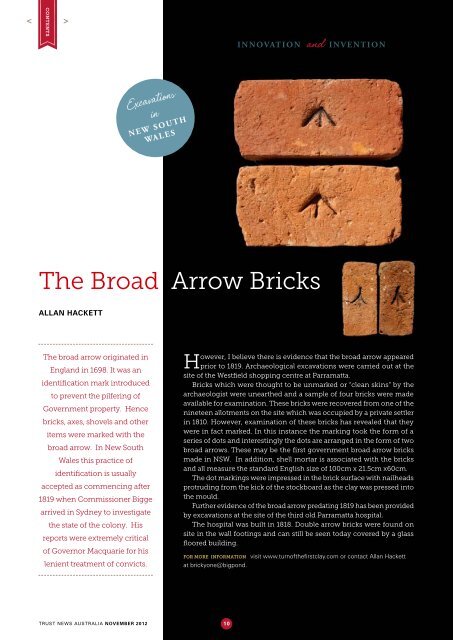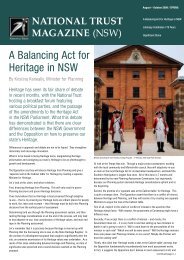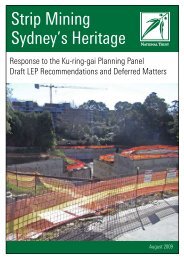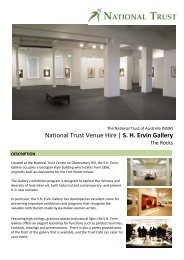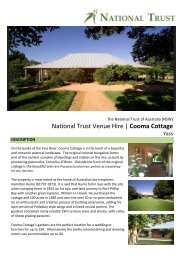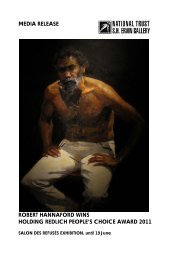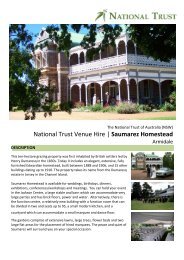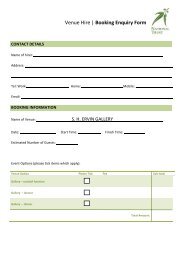NATIONAL TRUST > - NSW
NATIONAL TRUST > - NSW
NATIONAL TRUST > - NSW
Create successful ePaper yourself
Turn your PDF publications into a flip-book with our unique Google optimized e-Paper software.
innovation and invention<br />
Excavations<br />
in<br />
New south<br />
wales<br />
The Broad Arrow Bricks<br />
Allan Hackett<br />
The broad arrow originated in<br />
England in 1698. It was an<br />
identification mark introduced<br />
to prevent the pilfering of<br />
Government property. Hence<br />
bricks, axes, shovels and other<br />
items were marked with the<br />
broad arrow. In New South<br />
Wales this practice of<br />
identification is usually<br />
accepted as commencing after<br />
1819 when Commissioner Bigge<br />
arrived in Sydney to investigate<br />
the state of the colony. His<br />
reports were extremely critical<br />
of Governor Macquarie for his<br />
lenient treatment of convicts.<br />
However, I believe there is evidence that the broad arrow appeared<br />
prior to 1819. Archaeological excavations were carried out at the<br />
site of the Westfield shopping centre at Parramatta.<br />
Bricks which were thought to be unmarked or “clean skins” by the<br />
archaeologist were unearthed and a sample of four bricks were made<br />
available for examination. These bricks were recovered from one of the<br />
nineteen allotments on the site which was occupied by a private settler<br />
in 1810. However, examination of these bricks has revealed that they<br />
were in fact marked. In this instance the marking took the form of a<br />
series of dots and interestingly the dots are arranged in the form of two<br />
broad arrows. These may be the first government broad arrow bricks<br />
made in <strong>NSW</strong>. In addition, shell mortar is associated with the bricks<br />
and all measure the standard English size of 100cm x 21.5cm x60cm.<br />
The dot markings were impressed in the brick surface with nailheads<br />
protruding from the kick of the stockboard as the clay was pressed into<br />
the mould.<br />
Further evidence of the broad arrow predating 1819 has been provided<br />
by excavations at the site of the third old Parramatta hospital.<br />
The hospital was built in 1818. Double arrow bricks were found on<br />
site in the wall footings and can still be seen today covered by a glass<br />
floored building.<br />
For more information visit www.turnofthefirstclay.com or contact Allan Hackett<br />
at brickyone@bigpond.com<br />
Trust News Australia november 2012<br />
10


